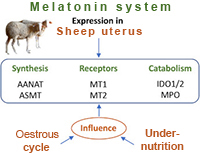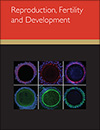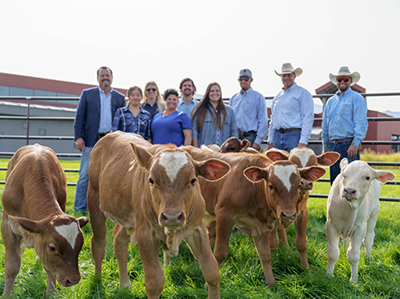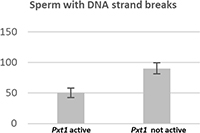Reproduction, Fertility and Development
Volume 35
Number 11 2023
Melatonin has important effects on reproduction, but the melatonin system has not been studied in the sheep uterus. This research demonstrated the expression of melatonin synthetising and catabolising enzymes, and melatonin receptors in the sheep uterus, and showed that they are influenced by the day of the oestrous cycle and undernutrition. The results help explain the adverse effects of undernutrition on reproduction in sheep, and the success of exogenous melatonin treatments in improving reproductive outcomes.
Animal cloning was first achieved nearly 30 years ago and is a powerful tool to create gene-edited animals and reproduce animals with valuable genetics, yet it remains a difficult and inefficient process. This study determined that a combination of chemicals added at the beginning of the cattle cloning process resulted in a four-fold increase in cloned cattle produced. We can now further learn how these chemicals improve cloned embryos and test this process on additional species.
Human male infertility is a growing health problem affecting every seventh couple in developed countries. Mouse models are a powerful way to study male fertility at the molecular level. Here we demonstrated that the targeted deletion of the mouse Pxt1 gene leads to an increased proportion of spermatozoa with DNA strand breaks. As a similar gene is present in the human genome, it may be of interest in diagnosis in men with fertility problems.








